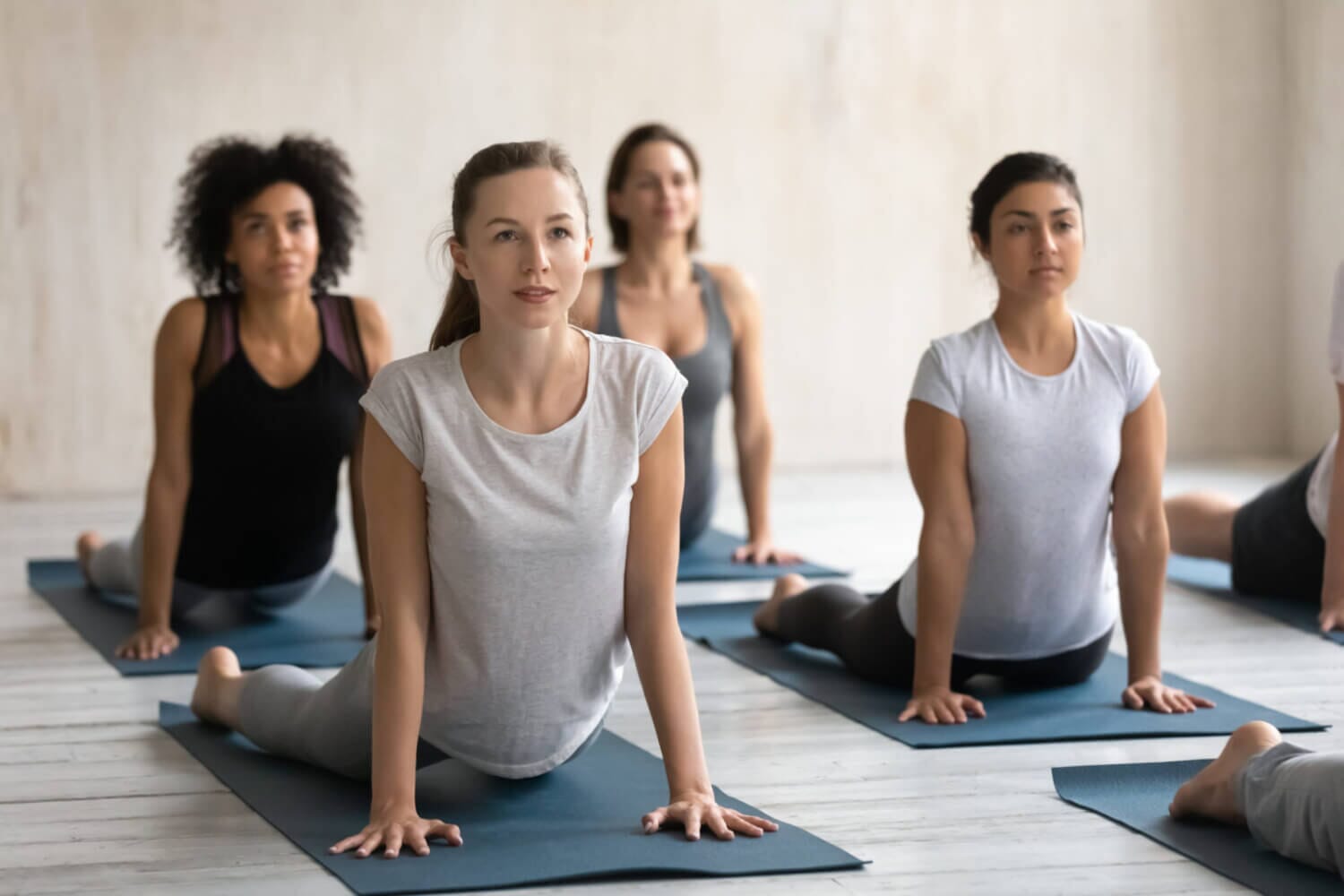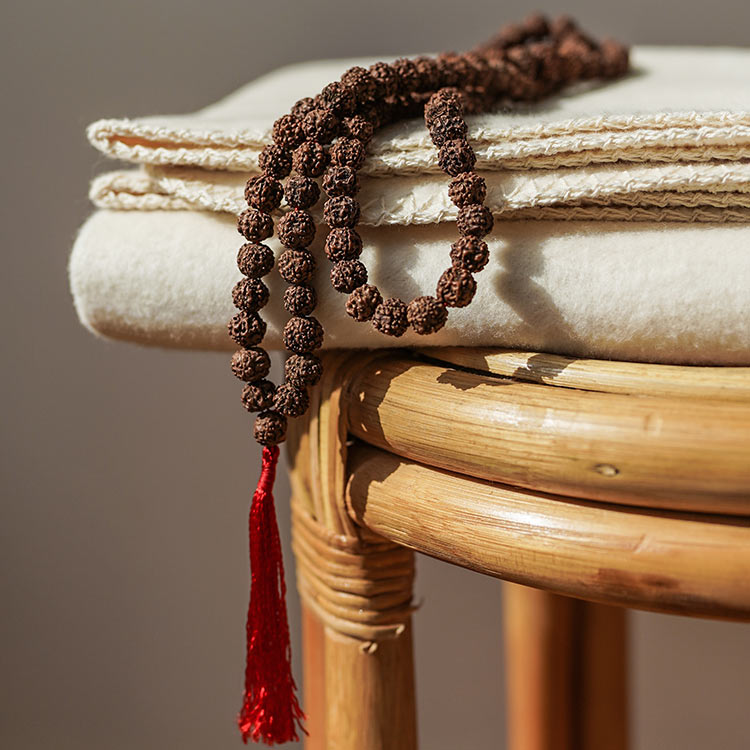
What is Vinyasa Krama? How can you create your own Vinyasa flows?
If you're already familiar with yoga, you'll know that Vinyasa is a very flowing sequence of different asanas. They follow the inhalation and exhalation and are always directly coordinated with them. Thus, the term "Vinyasa" encompasses the movements performed in synchronization with the breath. The two terms Vinyasa and Krama therefore have a different meaning, which we'll clarify in this article. You'll also learn all the helpful information you need for creating your own Vinyasa flow.

Vinyasa Krama: The Definition
To ensure clarity right from the start, we want to explain the meaning of Vinyasa Krama. This term refers to the correct sequence that
leads to the goal. While "Vinyasa" translates as "arrangement," "Krama" can also be called "sequence."
In Sanskrit, Vinyasa Yoga is also defined as "synchronization of movement and breath, with a gradual progression of asanas." The style originates from the renowned yogi Sri T. Krishnamacharya. Krama Yoga was also integrated into Ashtanga Yoga (Power Yoga) by Sri K. Patthabi Jois.
Every asana practice has a goal: This goal can only be achieved if the yoga exercises are aligned accordingly. Of course, the goal always changes depending on the yoga class. The yoga teacher or the student themselves sets the desired intention, which will be worked on in the respective session. This is the advantage of these sessions, as with the correct sequence, the yogi's precise intention can be achieved.
How is the Vinyasa Yoga class structured?
Typically, the structure of a successful, mindful Vinyasa class on the yoga mat always follows the same pattern. This can, of course, be adapted to individual preferences using a variety of asanas, but the basic structure remains the same.
• Mobilization (during these exercises the body is warmed up and mobilized)
• Preparation (stretching, simple exercises)
• Activation (this is the more strenuous and challenging part, the asanas become increasingly complex)
• Stretching, follow-up
• Relaxation (Pranayama, for example Ujjayi breathing and Shavasana or meditation)
Intuitive structure of the yoga flow
As explained in the previous section, yoga classes always follow a specific order. This should be followed to ensure you get the best possible results. At the very beginning, you should ask yourself what you want to achieve from the class today. Then you can begin selecting the main asanas. Preparation and follow-up also play an important role.
Which main asanas are useful for you today?
Each exercise has its own unique effect on the body. In the following section, we'll explain clearly which exercises are beneficial for which effects. This way, you can create your very own flow step by step.
- Inversions are perfect for rejuvenating your appearance with Vinyasa Flow Yoga. They can also reduce anxiety or other nervous feelings and strengthen the mind. Here, you stand on your head—significant poses include handstands and headstands.
- Balancing poses help you feel your connection to the earth and center yourself more easily. A practice consisting of these exercises is perfect for strengthening concentration and the mind. This includes the tree pose, which can be incorporated into any session. After practicing it a few times, you won't fall over anymore.
- Pre-bends are especially recommended in the evening. They have a calming and regenerating effect. These include forward bends while sitting or standing; the upper body is bent forward.
- Backbends should be practiced when the mood is bad or even depressive. These expand the heart space. The most important Exercises include the shoulder bridge and the cobra pose. These expand the heart and therefore strengthen the heart chakra.
How can you best prepare for and follow up on your yoga session?
First and foremost, it's important to understand that preparation prepares the body for the subsequent exercises. Follow-up, on the other hand, involves the opposite approach.
Example:
• The main asana is the Cobra . This is a backbend, so you should prepare properly before doing the Cobra. You can do a gentle backbend while standing upright or the Locust Pose. To ensure proper balance for the Cobra, you can incorporate Child's Pose into your follow-up.
• If your main asana is the standing forward bend, prepare for this asana with the "half forward bend." The shoulder bridge (which is a backbend) is an excellent follow-up.
The principle is that you always balance the asanas after practicing them – and integrating your breath is also important. As a quick reminder: During the movements that "open" you, you inhale. During the twisting or closing movements, you exhale.
At the end of the exercises, you can incorporate a short breathing technique. In addition to Ujjayi breathing, you can also incorporate alternate nostril breathing or fire breathing. It all depends on your preference.

The final relaxation in Shavasana also plays a significant role. Whether you're doing a Yin Yoga Flow, Hatha Yoga, or Vinyasa, you should always take a few minutes to rest at the end. You can also sit on a meditation cushion and enter into silence.
Important: Always adapt the unit to your needs
The advantage of a self-assembled yoga session is that you can choose exactly the asanas that are most helpful at the time. The most important thing is: always pay attention to how your body feels. If a pose is uncomfortable, for example, stay in it for a shorter time or try a different one entirely. It's also a good idea to always pay attention to your own state of mind and create a flow that works for you. If you're unsure, taking a course may be advisable to familiarize yourself with all the different yoga poses.
Do you create your own yoga flows? If so, which poses do you like best?
Share


